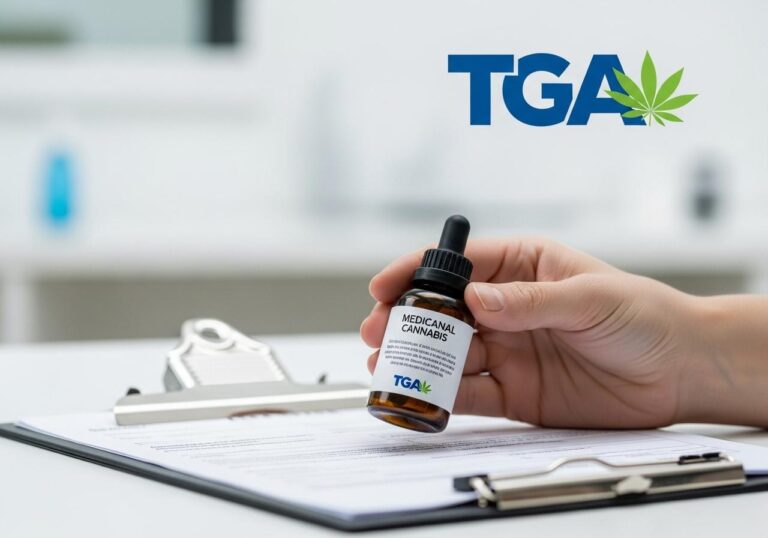Contents
- 1 Introduction to the TGA and Medicinal Cannabis in Australia
- 2 Criteria for Accessing Medicinal Cannabis
- 3 The Approval Process for Medicinal Cannabis
- 4 Prescribing and Dispensing Medicinal Cannabis
- 5 Legal and Regulatory Considerations
- 6 Ongoing Research and Development
- 7 Challenges and Future Directions
- 8 Resources and Support for Patients and Providers
- 9 Key Points
Introduction to the TGA and Medicinal Cannabis in Australia
Australia, a land known as much for its stunning landscapes as its distinctive wildlife, has quietly ventured into another frontier—medicinal cannabis. Here, the Therapeutic Goods Administration (TGA) serves as the steadfast guardian of this budding industry. Established in 1989, the TGA is the Australian government’s trusted entity for ensuring that therapeutic goods, from vaccines to vitamins, meet specified standards. But when it comes to medicinal cannabis, their role becomes even more intriguing.
Historically, cannabis in Australia has had a rollercoaster relationship with the law, swinging from widespread medicinal use in the 19th century to a complete prohibition. Fast forward to today, and medicinal cannabis has made a cautious yet significant return, all under the watchful eye of the TGA. Understanding their official guidelines isn’t just crucial—it’s the foundation upon which safe and effective use is built.
Criteria for Accessing Medicinal Cannabis
So, how does one go about accessing these therapeutic goods? Let’s explore the criteria. Not every patient can walk into a pharmacy and expect to get their hands on medicinal cannabis. Eligibility requirements are specific and often revolve around the severity and nature of the medical condition. Common ailments treated include chronic non-cancer pain, chemotherapy-induced nausea and vomiting, epilepsy, and even certain forms of palliative care.
Medical practitioners, often the unsung heroes in this narrative, play a pivotal role in the approval process. They must assess whether the potential benefits outweigh the risks for their patients. Meanwhile, patients are faced with a variety of medicinal cannabis products—anything from cannabinoid oils to sprays, each designed to tackle different ailments.
The Approval Process for Medicinal Cannabis
Navigating the approval process is akin to embarking on a labyrinthine journey, with a choice of pathways that might seem daunting at first glance. Primarily, there are two— the Special Access Scheme (SAS) and the Authorised Prescriber Scheme. Each requires a heap of documentation and solid medical evidence, sometimes resembling a minor dissertation in its demands.
But fear not; the timelines, while variable, are often manageable. The processing duration largely depends on the complexity of the case and the urgency of the medical condition. This comprehensive yet streamlined system ensures that the right patients receive the right products in a timely manner.
Prescribing and Dispensing Medicinal Cannabis
Once the green light from the TGA is acquired, the responsibility shifts to healthcare providers and pharmacists. Guidelines for prescribing are clear, emphasizing patient education and informed consent as paramount. After all, medicinal cannabis isn’t your run-of-the-mill prescription. Dosage recommendations are tailored to individual needs, with the product selection often resembling a connoisseur’s careful choice of fine art.
Healthcare providers must keep meticulous records, monitoring patients for efficacy and side effects. It’s a delicate balance of art and science, where each decision impacts the patient’s quality of life.
Legal and Regulatory Considerations
Let’s not forget the legal framework—a complex web of federal and state regulations designed to ensure both compliance and quality control. The TGA’s role extends beyond approval; it involves rigorous product safety checks and managing potential interactions with other medications.
For those tempted to sidestep these regulations, the penalties are stringent. As fascinating as the world of medicinal cannabis may be, it’s not the Wild West. Instead, it’s a carefully controlled environment where compliance is non-negotiable.
Ongoing Research and Development
Research into medicinal cannabis is a dynamic field, with the TGA at the forefront, supporting clinical trials and research priorities that promise exciting developments. Collaboration with international research bodies has become a crucial step in refining guidelines and updating policies.
Imagine a future where the findings from today’s research pave the way for new treatment options and better patient outcomes—a reminder that our understanding of medicinal cannabis is continually evolving, much like the science itself.
Challenges and Future Directions
Yet, it’s not all smooth sailing. Patients and healthcare providers face a myriad of challenges, from accessibility issues to public misconceptions. Advocacy and public policy initiatives are crucial in addressing these hurdles.
Potential legislative changes loom on the horizon, suggesting a future where medicinal cannabis in Australia is more accessible and widely accepted—a world where stigma gives way to informed understanding.
Resources and Support for Patients and Providers
Luckily, support is readily available. The TGA offers a wealth of resources and support services, complemented by educational programs for healthcare professionals. Patient advocacy groups and support networks provide a community for those navigating this new terrain.
For those seeking assistance or further information, Queensland Health and the Commonwealth Department offer valuable contacts. These resources ensure that both patients and providers are never alone on this journey.
Key Points
- The TGA regulates medicinal cannabis in Australia, ensuring safety and efficacy.
- Access requires meeting specific eligibility criteria, focusing on conditions like chronic non-cancer pain and epilepsy.
- The approval process involves documentation and pathways like the SAS and Authorised Prescriber Scheme.
- Healthcare providers play a significant role, from prescribing to monitoring patient outcomes.
- Compliance with legal and regulatory frameworks is essential, with the TGA overseeing quality control.
- Research and development are ongoing, promising future advancements in treatment options.
- Challenges remain, but support is available through TGA resources and patient advocacy groups.



